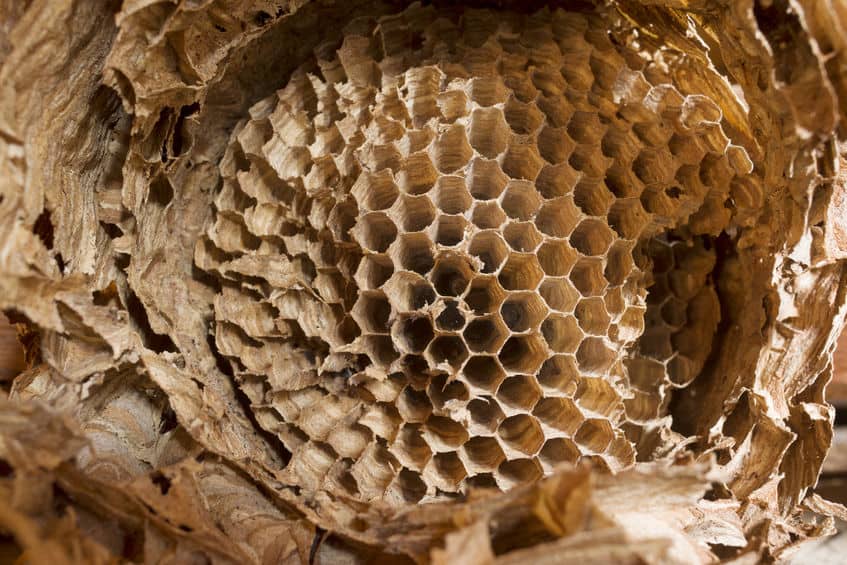Noticing a high number of wasps in the garden and around your home is a good sign that there may be a nest nearby, and if allowed to mature, they can produce thousands of wasps per year. Nests are typically found in sheltered spots with easy access, but what happens if they make it into the walls?
Wasps can live in walls, and it is not uncommon to find wasps nests in the space between the drywall. If these cavities can be accessed from outside, even from a tiny hole, wasps will seek out the dark and protected area. If not dealt with early, they can build a nest.
This article will explore the common signs of wasps nests, how to deal with them, and how to prevent them from occurring in the future.

Common Signs of a Wasps Nest
You will know if you have a wasps nest close by if you begin to notice a higher number of wasps around your home. The closer it gets to summer, the more you will see as the nest matures. They can be identified by their paper-like coating and will typically be seen under eaves, in roof gaps, and even in the garage.
Wasps in the Walls
If you cannot see the nest from the outside of the house, it may have been built within the walls of your home. You may see worker wasps flying into small holes along the edges of your residence, with no sign of any nest. Similarly, it is possible to hear the buzzing from within your home.
A wasps nest in the walls is often the hardest to remove, as it is the most difficult to access. Having the nest inside the wall cavity can damage the surrounding wood from movement and moisture. Killing wasps as they leave the space will result in them digging deeper into the area, and spraying anything into the gap will lead to added moisture and possible fungal growths.
How To Remove a Wasps Nest From Inside the Walls
Wasps nest removal should be done as early as possible and by a professional. However, if possible, do not attempt to remove the nest during the summer as this is when it will be the biggest and the most dangerous.
Depending on the nest’s size, it may be required to drill into the wall for better access. For smaller nests, pest removers will typically use a dust formula that is injected into the cavity. To prepare for this, you can:
- Locate the nest and the hole from which they are emerging
- Ensure there are no other open access points to the nest
- Place a lure trap near the entrance to attract and trap the wasps, thus reducing the size of the nest
The dust pesticide used is immediately effective and will kill the nest and the wasps inside, though some may escape during the pesticide’s insertion. Having lures present will help to catch any wasps that may escape.
How To Prevent Wasps Nests
There are a few things you can do to stop wasps from building nests in and around your home and garden:
- Perform regular maintenance checks on your home, sealing any cracks or holes.
- Have screens on your windows to prevent wasps from entering your house.
- Keep a lid over your garbage cans so as not to attract any pests.
- Place wasp traps around your home and garden.
- Call a pest control professional at the first sign of a nest.
Final Thoughts
Wasps can live in walls, and these nests are often the most complicated to remove. If the nest is big enough, it can require cutting into the wall for a thorough removal. Even smaller nests can be challenging to eliminate depending on how deep they have built. Be sure to seal any cracks or holes into which wasps may fit, and always call a professional for safe and proper removal.
